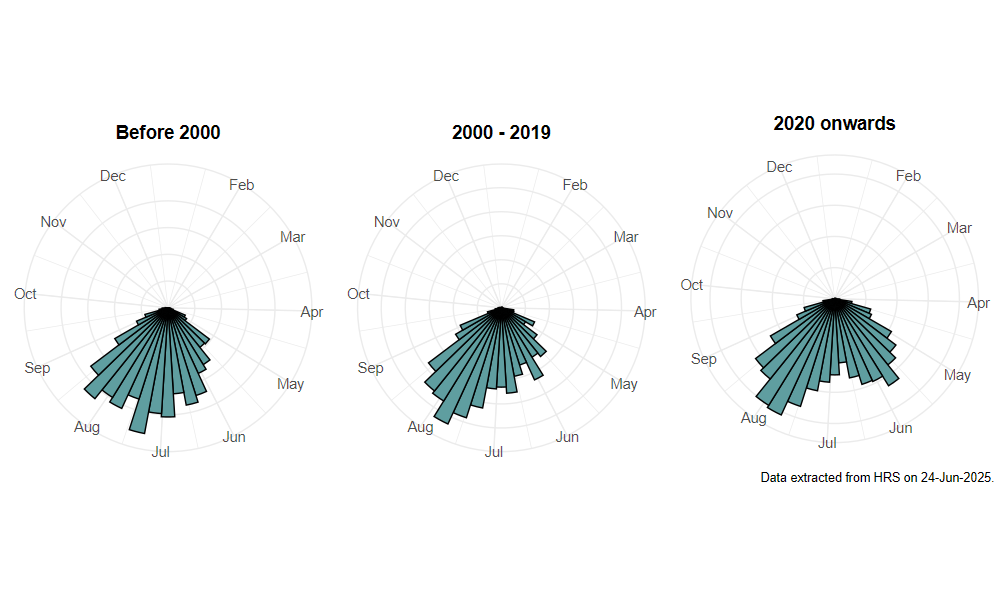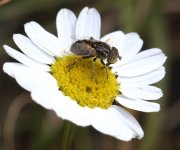Eristalinus sepulchralis (Linnaeus, 1758)
Identification
Identification difficulty = 2. ![]()
![]() according to Ball & Morris, 20241
according to Ball & Morris, 20241
Synonymy
Eristalis sepulchralis Linnaeus in Coe(1953)2.
Biology
The larva of this species is of the 'long-tailed', aquatic type, occurring in rotting vegetation around ponds and marshes especially when enriched with animal dung, etc. It can also breed in polluted conditions, such as the run-off from dung heaps and silage clamps. Adults can often be seen settled on bare mud or swept from long vegetation near breeding places, and may be found visiting a wide range of flowers. Adults overwinter.
Flight period
The following plots show the number of unique records per week excluding those reported to be of immature stages.

Distribution
Widely distributed and often abundant in wetlands in southern Britain north to Cumbria. It is especially abundant in lowland and coastal wetlands (e.g. coastal grazing marshes). There are scattered records from the Central Lowlands and some coastal localities in south and west Scotland. Can occur in the same coastal localiries as E. aeneus and the two species can sometimes be seen on the same flower, so care is needed in separating them.

Trends
The following plots show the Frescalo TFactor vs year and a map of the rescaled frequency (all records) for the species.
